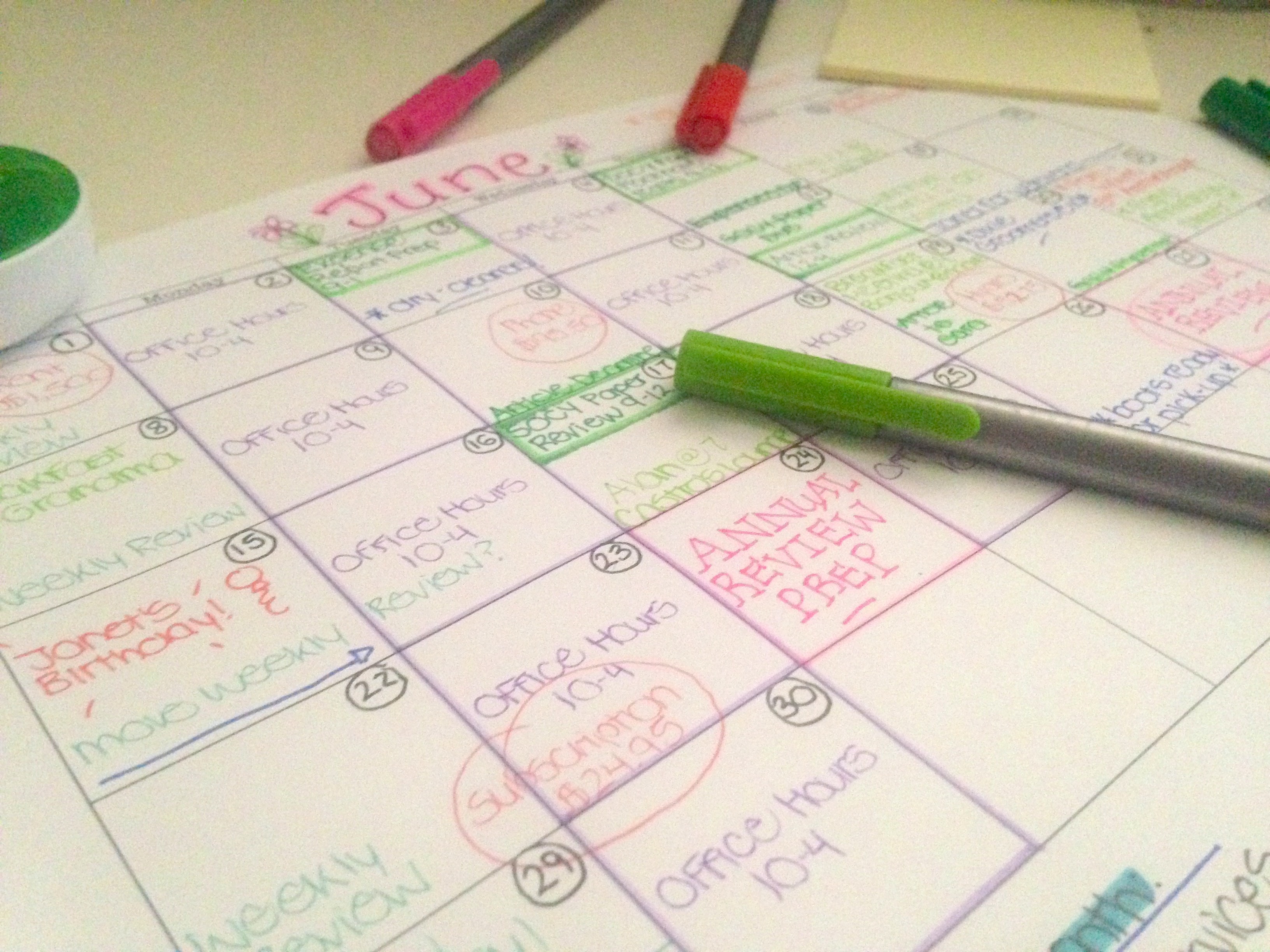
Ahhh, the beginning of a new year- time to reflect on all the successes and losses of the year gone by, and to plan for the months ahead. It’s bittersweet in a way, but I personally find it to be one of the more exciting times of the year.
Friends, it’s planner time. (Kind of like hammer time, except nerdier.)
If you’re anything like me, you’re probably excited too. Or maybe you’re wary of the whole planner system and are wondering whether it’s worth it to pick out a new one at all.
For those naysayers who claim they don’t need a calendar to keep track of their engagements, I say congratulations to you! I’m much better at committing something to memory if I record it somewhere, and although I’m generally good at remembering where I’m supposed to be at what time, I do have the occasional slip-up.
Consider this as well: your planner isn’t merely to serve as a reminder of all of your deadlines, important occasions and appointments. It’s also a great tool for prioritizing your workflow, and for forming a plan of attack for the weeks ahead of you.
Or maybe your reluctance to start a new planner this year stems from an inability to find a system that you can customize so that it best fits your needs.
Here are some common planner problems:
- Smartphones are just that: really smart, and there truly is an app for everything (and probably for some things I’ve never even thought of before.) But your smartphone is as only smart as the person using it, and if you’re finding it hard to keep track of appointments using the calendar function on your phone, it could be that you’re simply a pen and paper person. Just because a certain way of doing things is popular doesn’t mean it’s right for you.
- Having said that, you may want to consider the format carefully before committing–people whose days are packed with appointments may want to use a daily planner, while someone whose work involves taking care of more long-term projects may want to use a calendar with a monthly format to get a bird’s eye view of key events. For the electronic calendar users out there, you may wish to experiment with the view settings in your favorite app to get a feel for which one works best for you.
- Once you’ve chosen your favorite format, you have to make your planner’s features work for you. People who use a three-ring planner format often have the advantage of being able to include different sections they can use as resources to help plan their schedules (i.e., church calendars, volunteer schedules, school lunch menus, etc.) Make over a store-bought agenda or simple notebook by typing and printing out similar resources and information and pasting these sheets over the pages you don’t use. Many calendar apps also feature similar add-ons, such as reminder functions and the ability to sync appointments with the contacts in your phone. One last word of advice: Electronic users should not underestimate the usefulness of subscribing to other electronic calendars to co-ordinate anything from birthday parties to play dates with other family members and parents.
- Even though the ways to customize your agenda or planner may seem endless, it’s best not to go overboard. Any system that is overloaded with information is often too complicated to use, and you’ll spend half the time organizing the information you have instead of deciding what needs to be done with it. Paring your planner down to only the things you need hones your focus and clears your vision so you can actually get things accomplished. (And hopefully in a timely fashion!)
- It may seem simple, but if you don’t use it, your planner is not going to be useful to you. Keeping your planner up-to-date and referring to it often are key components in formulating a strategy for tackling your workload. If you have trouble doing these things, it means you probably haven’t chosen a system that works for you and your lifestyle (see 1-4).
 Are you excited to get your schedule on track for the new year as much as I am? Tell me some of the favorite ways you’ve organized your planner down below, or drop me a line at keepingbusyb@gmail.com. I may include your tips in an upcoming post!
Are you excited to get your schedule on track for the new year as much as I am? Tell me some of the favorite ways you’ve organized your planner down below, or drop me a line at keepingbusyb@gmail.com. I may include your tips in an upcoming post!
For more inspiration on getting things more organized and productive, click here and here.

